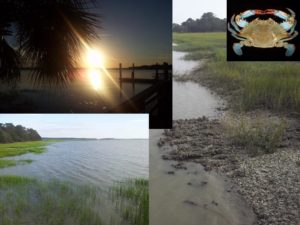About
Previous research has shown that the urine of blue crabs causes reduced foraging of mud crabs through non-consumptive predator-prey interactions. Non-consumptive effects and resulting trophic cascades are well established as a critical prey interaction in many ecosystems. Responses to chemical cues by prey have been shown to be dependent on predator diet in some cases and independent of diet in others, however, the identity of cues are unknown in most systems. Utilizing 1H NMR metabolomics of urine samples from blue crabs fed different diets, we showed that metabolite profiles are unique to each diet and distinguishable from one another. Fifteen primary metabolites including amino acids, biosynthetic building blocks, and compounds involved in energy shuttling were identified in blue crab urine and are hypothesized to be involved in distinguishing between the urine of blue crabs fed different diets.
Utilizing partial least squares discriminant analysis (PSL-R) of spectral data in conjunction with a laboratory bioassay to detect behavior of mud crabs in response to chemical cues from blue crab urine, we identified 10 metabolites from blue crab urine whose concentrations correlated with behavioral responses in mud crabs. We confirmed the molecular structures of these metabolites and measured their deterrent abilities as individual compounds as well as the deterrent ability of complex mixtures. Homarine and trigonelline were identified as major components in blue crab urine that induce fear in mud crabs.
Since oysters are a keystone species in the Georgia estuary, and preyed upon by generalist blue crab predators, we are now investigating the potential of blue crab urine to induce fear in oysters. Statistically-driven 1H NMR and MS-based metabolomics are currently being used to identify compounds within blue crab urine that correlate with increased oyster defenses. Ultimately, we aim to understand the role of chemical signaling in predator-prey interactions and community structure of the oyster reef habitat.

Related Publications
Poulin RX, Lavoie S, Siegel K, Gaul DA, Weissburg, Kubanek J (2018) Chemical encoding of risk perception and predator detection among estuarine invertebrates. Proceedings of the National Academy of Sciences. DOI: 10.1073/pnas.1713901115
Weissburg M, Poulin RX , Kubanek J (2016) You are what you eat: a metabolomics approach to understanding prey responses to diet-dependent chemical cues released by predators. Journal of Chemical Ecology 42 (10): 1037-1046. DOI:10.1007/s10886-016-0771-2